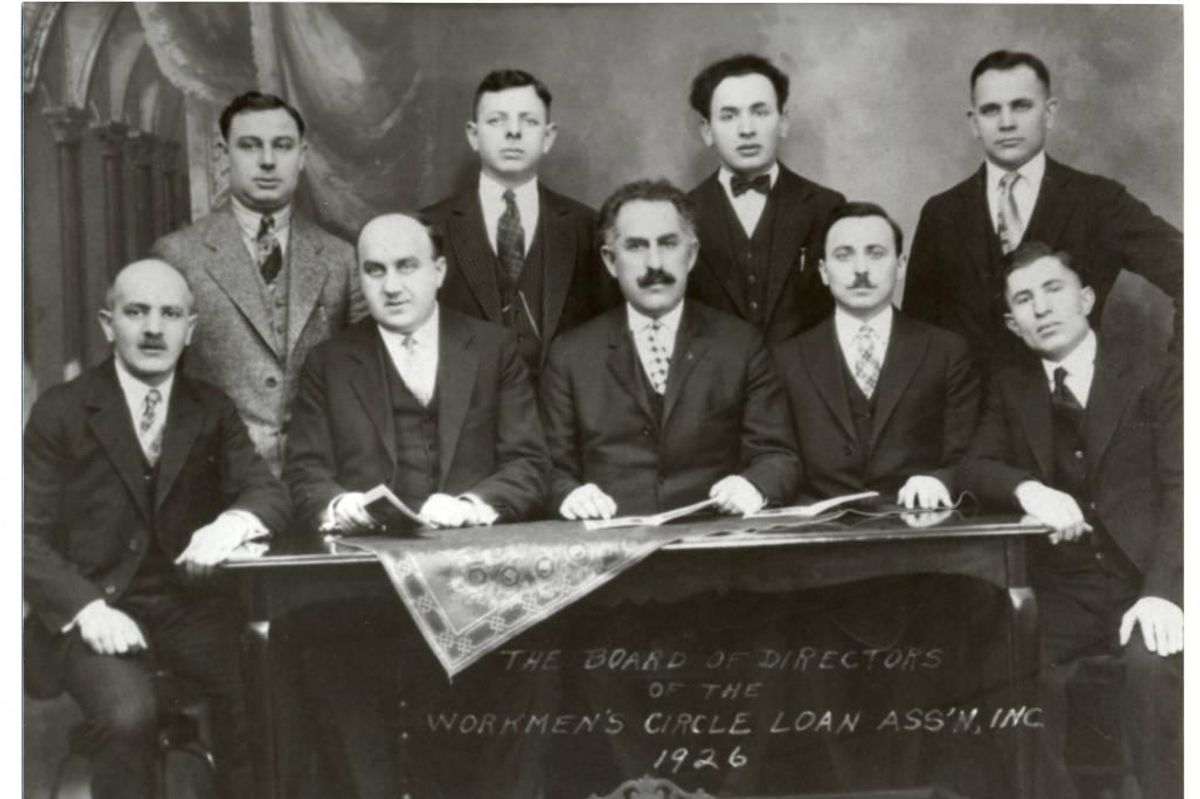
When managing a project, the project management team really needs to understand the expectations of top management as well as those of the key stakeholders who have a vested interest in the project.
Although the project team may focus on the key performance indicators and strive to meet these targets by using proven project management techniques, there are several other techniques the team can use in order to make a direct, positive impact on the final results.
What Does Top Management Really Want From Their Projects?
 File:Board of Directors of the Workman's Circle Loan Association ...commons.wikimedia.org
File:Board of Directors of the Workman's Circle Loan Association ...commons.wikimedia.orgWhen prospective projects are presented to the board of directors for approval, there are only two things they are really interested in:
- Will the project make money?
- Will it be executed in a safe, ethical, and compliant manner?
Everything else is really up to the project team to deliver in the most efficient way.
Most project managers I have known are quite astute in their knowledge of the PMBOK (which I am a firm proponent of!) and follow its guidelines in order to meet the P&L margin expectations generated at signature of the project charter.
As P&L responsibility is arguably THE most important measure of a project manager's success, the projects are usually executed with the main intent of avoiding any margin erosion in the process rather than actually identifying opportunities to INCREASE the margin.
In this piece, I will share with you the specific hacks I have used during project reviews involving the board of directors as well as other key stakeholders in which margins were actually improved in a number of areas and with specific controls in place.
Project Hack #1: Management Of Change (MOC)
 Group of businessman standing next to a text Business Proc… | Flickr
Group of businessman standing next to a text Business Proc… | FlickrOne of the most challenging parts of project management is ensuring that the scope and associated deliverables are clearly defined. I think it is of upmost importance that the project manager be involved during the development of the scope deliverables so as to avoid ambiguities while giving the project team the best chance to execute a successful project.
Even if the scope is not 100% bulletproof, the project team can still manage it in such a way that any potential changes that arise during execution can be studied carefully to determine their impact, both internally and externally.
When the customer introduces a change, or external MOC, this is the opportunity for the project team to calculate the impact on the costs, schedule, and quality so as to determine if a change order request will be presented to the customer. This is a classic example of MOCs and a way for the project team to increase the margin based on its ability to "sell" the change order to the customer.
When internal changes occur, either by some department of the company or the project team itself, the internal MOC is raised and the project team analyzes the impacts much like the external MOC. Cost savings may not necessarily need to be passed over to the customer and these savings will also help the bottom line of the project.
Successful project teams maintain a MOC register with the positive and negative impacts per change and in a balance sheet format so as to be able to show how this process contributed to better financial performance of the project.Project Hack #2: Document Management
 Woman surrounded with paper KZ4LB | from mircosoft clipart | Flickrwww.flickr.com
Woman surrounded with paper KZ4LB | from mircosoft clipart | Flickrwww.flickr.comI find that the vast majority of project managers focus their attention on the main documents they feel are important to process, rather than creating an exhaustive list of ALL of the documents that must be supplied.
With project documentation requirements becoming increasingly complex, mostly due to legal, compliance or environmental regulations, the need to have a complete document register per project is paramount.
Most contracts have specific time periods to submit and return documents through final approval.
In the case of a huge valve project I worked on, one of the contract requirements was:
- Supplier must submit drawings within four weeks of contract award
- Customer must comment or approve drawings within two weeks of receipt from supplier
- Supplier must resubmit drawings to respond to customer comments within two weeks of receipt
On this project, our team issued more than 100,000 documents, the vast majority of which were never commented or approved by the customer within the contractually agreed time period.
When it came time to negotiate change orders, late penalties, and other contractual terms, the project team displayed the complete document register with the time periods for each and every document processed.
The customer was astonished when our project team showed them that they were more than 500 days late and that this was directly responsible for the late valve deliveries experienced.
The customer originally asked us to pay the air freight to recover the schedule, but ended up paying the air freight for the materials without applying any late penalties. We also charged them expediting fees from our manufacturing facility as well so the final positive impact on the P&L was more than 2%!Project Hack #3: Milestone Billing Management
 Cash Flow | A word cloud featuring "Cash Flow". This is lice… | Flickrwww.flickr.com
Cash Flow | A word cloud featuring "Cash Flow". This is lice… | Flickrwww.flickr.comSome project managers feel that the financial billing process of their projects is something that should be managed solely by finance, with minimal inputs from the project team. This simplistic approach may result in invoices being paid, however, without considering all important cash flow.
As they say, time is money, and the invoicing process is right up there on the list of my top priorities when managing a project.
You could have actually had the most robust MOC process and improved the margin, but actually cost the company financially due to late issuance and also late payment of customer invoices.
On a half billion dollar project I worked on, the deliverables followed a series of 7 milestones for which the company would be paid increments through final delivery and installation.
Milestones 1-4 covered activities such as engineering and raw materials whereas milestones 5-7 covered delivery of the products as well as final installation.
The process was further complicated by partial deliveries of items, readjustment clauses for inflation, as well as realignment for currency fluctuations.
Our project team created a "Milestone Invoice Register" aimed at proactively managing the nearly 1,000 customer invoices that would be issued on the project.
By tying the register to the schedule, collecting the supporting documentation for each milestone as soon as it was available, and also preparing the invoices ahead of time, we were able to release the invoices earlier than expected and expedite approval by the customer.
At the same time, we maintained close communication with the customer's AP department throughout the project so as to resolve any issues immediately.
As a result, milestones were issued ahead of schedule and payments received quicker than expected. The net result was a cash cycle of less than 40 days (vs. 100 days on previous projects) and positive cash flow throughout the project.
Top management was very impressed at this result as it allowed the company to reduce its interest rate payments as well as free up cash for an important acquisition.Project Hack #4: Cost Reductions
 Cost Reduction - Free of Charge Creative Commons Highway sign imagethebluediamondgallery.com
Cost Reduction - Free of Charge Creative Commons Highway sign imagethebluediamondgallery.comCost control is a fundamental part of the project management profession.
During this process, communication with supply chain is vital so that the key supplier contracts are issued and managed as per the budgets calculated during the bid stage.
An effective project team will try to influence the negotiation of these contracts so as to obtain more favorable pricing or other commercial conditions.
At the same time, they may suggest alternate suppliers for certain scope in order to reduce the overall cost of the project.
Logistics is a key area in this aspect and options such as ocean vs. air freight, alternate airports, or shipping lanes can be opportunities to further optimize the cost.
At the same time, optimization of the project team's allocated hours, as well as hours allocated from other departments is another way to reduce the overall cost to the project.
The cost control team should also participate in the MOC and financial billing processes so that cost benefits can be achieved in these areas as well.
A successful project can greatly benefit from an active and alert cost control team who is always searching for cost reductions that help the bottom line!Project Hack #5: Incremental Revenue
 Download free photo of Chart, businessman, money, statistic, coin ...www.needpix.com
Download free photo of Chart, businessman, money, statistic, coin ...www.needpix.comI have always subscribed to the notion that project managers make great sales people.
When you think about it, the project management function is basically managing a business within a business, yet with a strong customer focus in all areas of the project.
The project manager must fully understand the customers' needs and what makes them tick so that they can communicate effectively while negotiating issues that always come up during project execution.
The project manager needs to establish a very close relationship with the customer so that a level of trust is created.
During the course of this relationship, it is not uncommon for the customers to inform the project managers of additional business opportunities that may be of interest to both parties.
The project manager can then relay this valuable information to the sales organization to determine if and how the opportunity can be explored.
The project manager can also identify opportunities on the actual project being managed, such as scope being executed unsuccessfully by other companies for which the customer may want to change suppliers.
There may also be opportunities beyond the originally intended scope, such as installation services for the products being supplied by the project team, monitoring of assets, or, in the case of one of my projects, digital and procurement services to be supplied as a bolt-on to the original contract.
Top management is usually quite impressed when the project team shows all of the incremental business secured as a result of successfully managing the original scope.
There is no doubt that projects can be very successful when applying proven project management techniques such as waterfall or agile. When managing highly strategic projects, project teams can take their success to the next level by implementing these few hacks and thus increase their visibility with top management in the process.
- Project Execution Plan: How PEPs Prevent Project Failures - Work It Daily ›
- How To Use Quality Management To Improve KPIs - Work It Daily ›
- How Playing TETRIS® Teaches Lessons In Strategy - Work It Daily ›
- Cost-Cutting Measures That Occur In Different Industries - Work It Daily ›
- #1 Thing That Breaks A Project (And Is In Your Control) - Work It Daily ›
- 3 Things You Need For Project Savviness In Uncertain Times - Work It Daily ›
- 6-Point Checklist For Taking Over A Distressed Project - Work It Daily ›
- Using The 2022 PMI Talent Triangle To Drive Project Success - Work It Daily ›
- The Best Time Management Hacks To Use On The Job - Work It Daily ›
- Navigating Project Chaos: My 4-Step Strategy For Success - Work It Daily ›
- Monday.com: Project Management Made Easy - Work It Daily ›

 Bigstock
Bigstock Bigstock
Bigstock Bigstock
Bigstock


